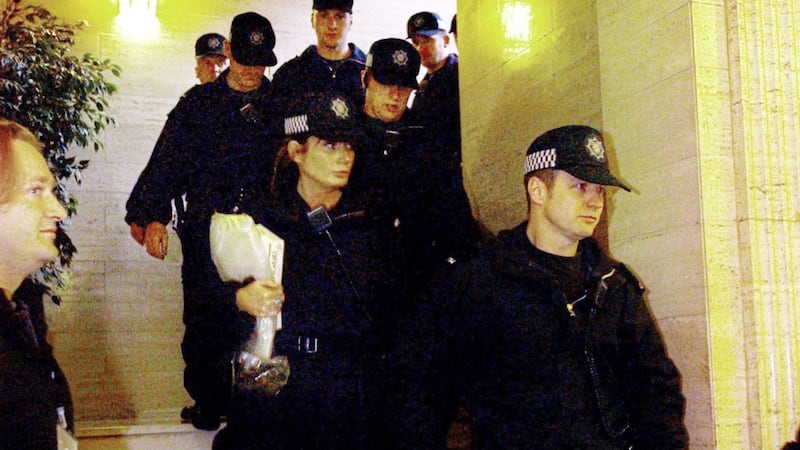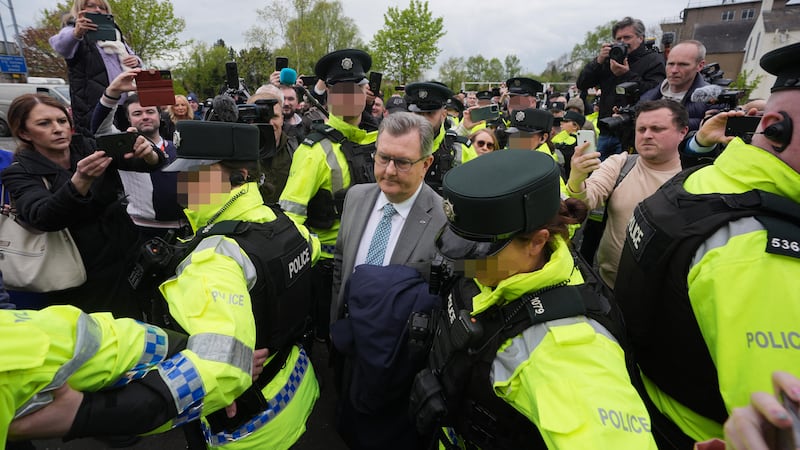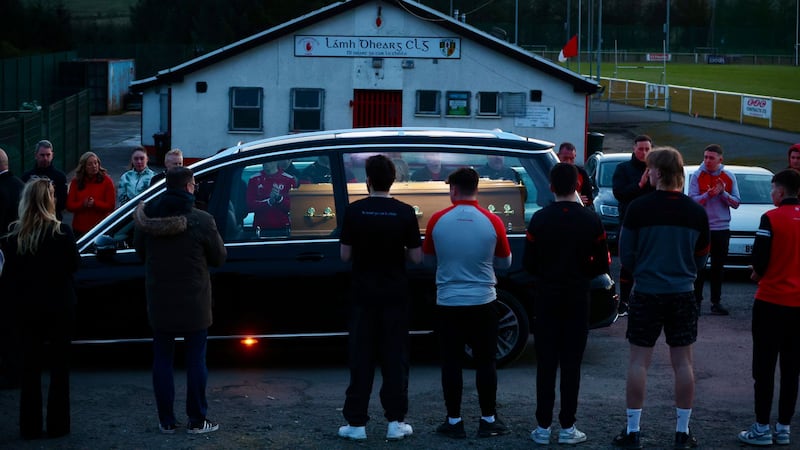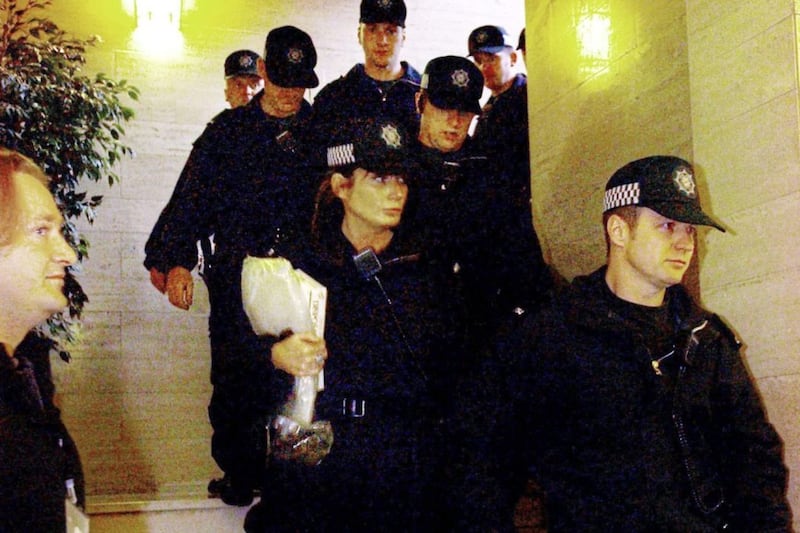DENIS Donaldson was thrust into the public spotlight in 2002 when an alleged IRA spy-ring was exposed at Stormont. The controversy, dubbed ‘Stormontgate’, resulted in the collapse of the fledgling administration.
With the peace process still in its infancy the new political structures were rocked when Mr Donaldson and three others were arrested. The three were detained after a major police raid at Sinn Féin’s Stormont offices.
A search of Mr Donaldson’s home following his arrest recovered a large quantity of documents, some from the NIO at Castle Buildings. All arrested were later charged with possessing material that could be of use to terrorists. The charges against one of the accused were dropped in December 2003. However, the charges against Mr Donaldson and the other two, his son-in-law Ciaran Kearney and civil servant William Mackessy, remained in place. Three years later the charges were dropped when the prosecution offered no evidence “in the public interest”. A judge returned verdicts of not guilty and told the three men that they were free to go.
Outside court Mr Donaldson said the “charges should never have been brought”. “It was political policing and political charges and the fact that we were acquitted today proves that,” he said.
Within days of the case collapsing Mr Donaldson was contacted by police who told him “members of the media believe that Denis Donaldson is an informant”. He was later interviewed over two days by members of Sinn Féin.
It has been reported that one of those who questioned Mr Donaldson was Sinn Féin MLA Declan Kearney, a brother of Ciaran Kearney.
In December 2005 then Sinn Féin president Gerry Adams held a press conference in Dublin and announced Mr Donaldson had been dismissed from the party. On the same day Mr Donaldson admitted his role as an agent.
“I was recruited in the 1980s after compromising myself during a vulnerable time in my life,” he said.
“Since then I have worked for British intelligence and RUC/PSNI Special Branch.
“Over that period I was paid money.”
Mr Donaldson said his last contact with Special Branch was two days before his arrest in 2002.
His family later claimed that he was contacted by his former handler known as ‘Lenny’ the day before he went public.
In his statement Mr Donaldson denied there was a republican spy ring saying “the so called Stormontgate affair was a scam and a fiction”.
“It never existed. It was created by Special Branch,” he said.
The following day he publicly admitted his role and went into hiding.
Several months later, in April 2006, Mr Donaldson was shot dead at a cottage near Glenties in rural Co Donegal, blasted in the chest with a shotgun.
In Easter 2009 the now defunct Real IRA claimed they had killed him.
In a statement it said: “No traitor will escape justice regardless of time, rank, or past actions. The republican movement has a long memory.”
It is understood he was writing a journal at the time of his death, which was later seized by gardaí.
Read More
- Denis Donaldson murder: Widow speaks of ongoing pain as Police Ombudsman findings revealed
- Police Ombudsman Marie Anderson: 'Corporate failing' on part of PSNI in Denis Donaldson case
- Denis Donaldson's exposure as an informer rocked the republican movement
- Denis Donaldson suspect Anton Duffy in Scottish jail








